Looking for tips on how to write killer SEO title tags?
SEO title tags are an essential component of search engine optimization that most people overlook.
However, getting them right can help you drive more clicks on search engine results pages (SERPs).
In This Article
What are Title Tags (And Why Do They Matter)?
A title tag (also called page title, meta title, or SEO title) is an HTML element used to specify the title of a webpage and must not be confused with header tags. The title tag is located in the head section of a page and looks like this:
<title>The 7 Best AI SEO Tools for WordPress in 2023</title>A title tag’s primary purpose is to tell visitors and search engines what to expect from your web page. Here’s what it looks like on the SERPs:

As you can see, title tags are part of SERP results snippets, including the URL and meta description.
Why do title tags matter?
Here are a few reasons to pay attention to your title tags:
- Increase organic clickthrough rates (CTR): If your SEO title tag shows that your content will meet search intent, it encourages users to click. This results in a boost in organic CTR.
- Helps you rank for your keyword: Keyword-optimized title tags are an essential on-page SEO element that can boost your SEO. While title tags may not be a direct ranking factor, they help search bots understand the page’s content.
Are Title Tags the Same as H1 Tags?
Many times, WordPress users confuse title tags and H1 tags.
Are they the same thing?
While they may look the same, title tags and H1 tags are two different elements. While title tags are HTML elements displayed on SERPs, an H1 tag is the title of the page and is only seen when a visitor clicks through to your page. Therefore, you must create a different title tag from your H1 tag.
Where Does the Title Tag Appear?
If the H1 tag appears at the top of a page as the title, where does the title tag appear?
The answer to this question provides insight into why title tags are essential to your SEO campaigns.
- SERPs: One of the most prominent places title tags appear is on Google’s search results and other browsers’ SERPs. Their purpose here is to convince searchers to click on your post, as this is the first impression users have of your content.
- Browser tab: Besides the SERPs, your title tag will also appear in the browser tab. Crafted well, users will easily remember it when they need to visit that page again.
- Third-party websites: External websites and social media platforms usually link to a page using the title tag as the anchor text. This is another reason to get yours right.
Now that you know what a title tag is and why it’s an important part of your SEO, let’s get down to the day’s business — writing effective title tags.
How to Optimize Your Title Tags Using AIOSEO
Leaving your title tags to fate is detrimental to your SEO.
Yes, Google does edit and use its own title tags in some instances, but that doesn’t mean it’ll optimize them for you.
That’s your responsibility.
Leaving your title tags to fate (and Google) will disadvantage you in the tough competition that’s on the SERPs. Instead, take time to craft your own optimized title tags using a powerful WordPress SEO plugin like All In One SEO (AIOSEO).

AIOSEO is the best WordPress SEO plugin on the market and has been downloaded over 100 million times. Millions of savvy website owners and marketers trust the plugin to help them dominate search engine results pages (SERPs) and drive relevant traffic to their sites. This is because the plugin has many powerful SEO features and modules to help you optimize your website for search engines and users.
Users love AIOSEO because it makes adding SEO title tags to WordPress posts and pages easy.
How to Automatically Write SEO Title Tags Using ChatGPT
One of the easiest ways to add SEO title tags in WordPress is by autogenerating them using AIOSEO’s AI Title/Description Generator. This powerful tool runs on ChatGPT to help you generate SEO title tags and meta descriptions with 1-click of a button.
To use the AI Title/Description Generator to add SEO titles to your posts or pages, scroll down the page to the AIOSEO settings, then click on the robot icon in the Post Title field.
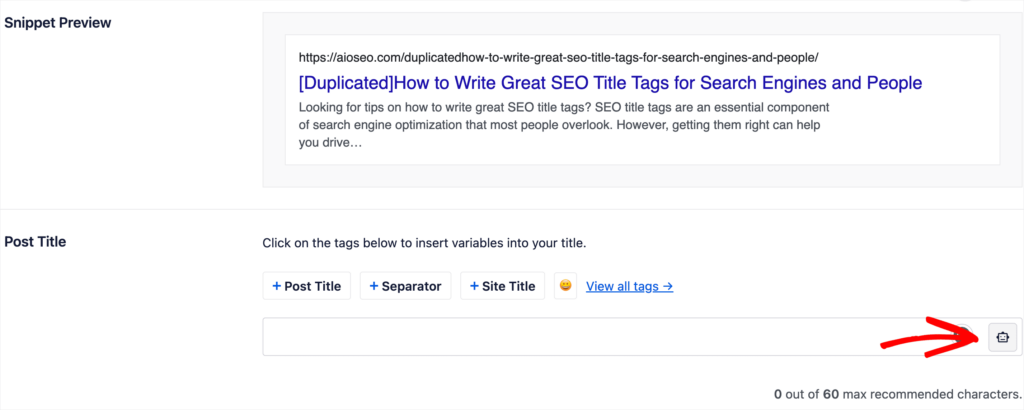
The AI Title/Description Generator will then give you 5 suggestions of title tags you can use.
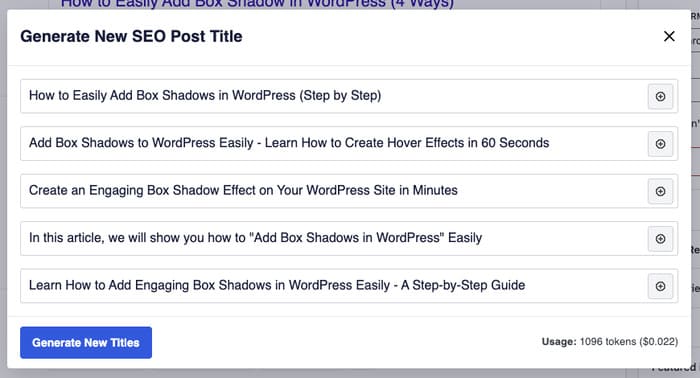
Next, click the plus (+) button to add your preferred suggestion to the SEO meta fields directly. You can then edit it if necessary.
Adding SEO Title Tags Manually
Besides autogenerating SEO title tags, you can also add them manually. If you use WordPress and the AIOSEO plugin, here’s how you can do that:
- Step 1: Scroll to the bottom of the page to the AIOSEO General Settings section and find the Post Title field.

- Step 2: Simply type in your optimized SEO title tag in the field, and that’s it. Plus, with AIOSEO, you can make your SEO title tags (and meta descriptions) more visible on SERPs by adding emojis.
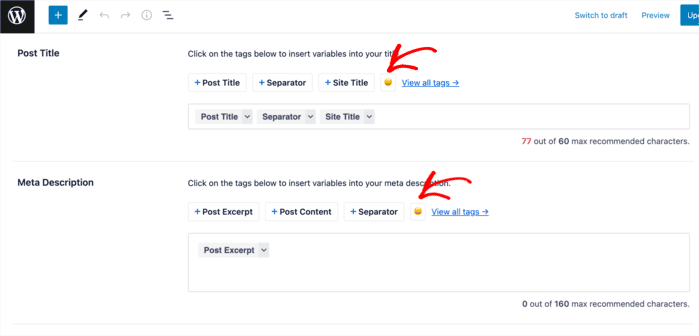
For step-by-step instructions on how to do this, check out this article.
Now that you know how to add SEO title tags in WordPress, let’s briefly look at some tips for writing effective ones.
8 Tips for Writing Winning SEO Title Tags
Getting your title tags right is a part of nailing your basic SEO.
But how do you craft a good title tag that results in more organic traffic to your content?
Let’s quickly jump into our eight tips for writing excellent SEO title tags for search engines and people.
1. Watch the Character Limit
One of the first things to note and be careful about concerning title tags is to follow the prescribed character range. Best practices dictate 60-70 characters to avoid your title tag being cut off on SERPs.
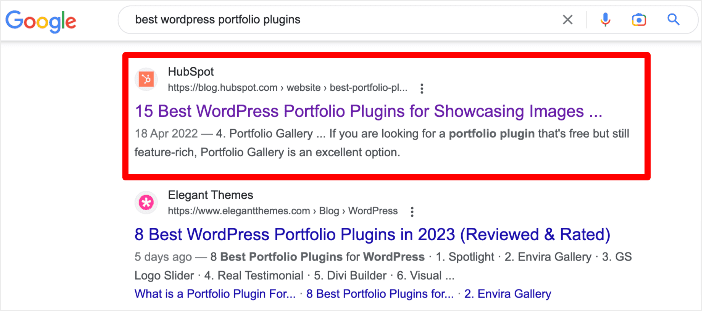
In the example above, the title is too long and thus got truncated. As a result, the user is unsure what the page is about. This leads to poor clickthrough rates. These signal to search engines that it’s a low-quality page. On the other hand, a higher CTR results in your page ranking higher.
2. Be Specific and Descriptive
Remember, your title tells what your page is about. Because of this, your title tag must be as specific and descriptive as possible. Doing so ensures that there’s no confusion about the page’s purpose.
Your page title should also be unique to avoid cannibalization. This is when two pages have the same or similar target keywords, resulting in shared traffic. Creating unique titles helps ensure search engines don’t confuse pages with similar keywords (like product pages). Doing so ensures that each page is displayed for the most relevant search query.
3. Craft Compelling Title Tag Copy
The primary purpose of title tags is to get users to click on your page or post on SERPs. Because of this, it must be compelling. Consider it an elevator pitch — your one shot at getting users to take action. A few tips for creating persuasive title tag copy include using:
- Verbs: Action words help elicit a response from users.
- Power words: These are words that elicit an emotional response from the reader. If a reader has an emotional connection with your title, the chances of clicking on your post are increased.
While it may be a tiny element of your copy, the title tag plays a huge role in the success of your digital marketing. That’s why you must take the time to craft effective title tags.
4. Use Your Primary Keyword Strategically
Keywords are one of the foundational aspects of SEO. They also play an essential role in crafting effective title tags.
The best way to strategically use your important keywords in your title tags is to frontload them. This means putting them as close to the beginning of the title tag as possible. One thing you should avoid is keyword stuffing. Also, don’t use variations of your keyword in the title tag. This is a black SEO tactic that leads to poor user experience.
5. Prove Search Intent and Topical Relevance
Search intent is another element of impactful SEO. It simply means the reason behind a user’s search, and Google’s new algorithms consider it when ranking content.
Knowing why users search for a particular keyword is essential in helping you create content they find helpful.
How can users know that your content will answer their questions?
By crafting your title tag so that it proves search intent.
To do this, your title tag must be topically relevant. In addition, it must give users the confidence to click on your article, knowing they’ll be satisfied with the content.
6. Write for Users First
One of the biggest mistakes people make with SEO is to think it’s all about search bots. Because of this, all optimization is done to rank well on SERPs, neglecting users in the process.
Optimizing for search bots and neglecting users is not proper SEO.
Effective SEO takes users into account as well. After all, what’s the point of ranking high yet generating no traffic?
That’s why, when crafting your title tags, do so for users first. When you write for users first, you increase the chances of users engaging with your content. One of the most important engagement metrics influenced by title tags is clickthrough rates.
To write title tags that are users centric:
- Avoid keyword stuffing
- Be descriptive
- Ensure your title makes logical sense
- Readability and memorability are key
Never put search engines before users. While this may give you some wins, they’re usually temporary, as search engines prefer content that provides users with a positive experience.
7. Highlight What Makes Your Content Unique
Another tip for writing excellent SEO title tags is highlighting what makes your content unique. With over 8 million blog posts competing for attention daily, being unique will help you stand out. It’s a necessity if you want to up your SEO and content marketing game.
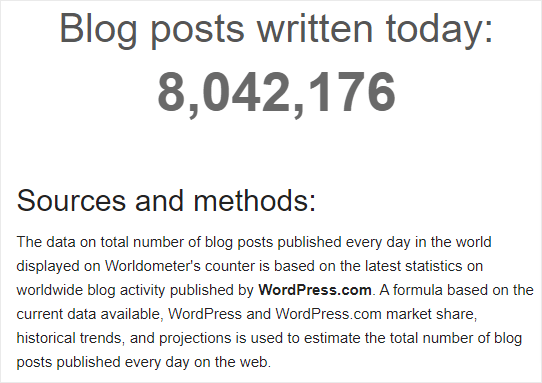
To increase your chances of your resource being picked on SERPs, highlight what sets you apart.
8. Use Curiosity to Encourage Clicks
People are naturally curious. As a marketer or blogger, you can use this to your advantage by crafting curiosity-driven title tags.
One way to do this is to apply a curiosity gap. Curiosity gaps refer to the space between what users know and what they want to know.
Creating a curiosity gap involves giving readers a hint of what they’ll find in the article. While it’s not easy to do with the limited character count recommended for title tags, you can pull it off with a bit of creativity.
Don’t Neglect Your SEO Title Tags!
Never leave title tags as an afterthought. Plan for them and craft effective ones for each page and post you create. Sure, they may not impact your SEO as much as other heavy-hitting strategies like link building. However, its little impact can make a huge difference in your SEO strategy.
You should also consider revisiting the posts you’ve already published and crafting optimized title tags for them. This is probably one of the most underrated SEO tips that can give you an edge over your competitors.
We hope this article has helped you learn how to write SEO title tags for people and search engines. You may also want to check out other articles on our blog, like our ultimate WordPress SEO guide or our technical SEO checklist.
If you found this article helpful, then please subscribe to our YouTube Channel. You’ll find many more helpful tutorials there. You can also follow us on Twitter, LinkedIn, or Facebook to stay in the loop.
Disclosure: Our content is reader-supported. This means if you click on some of our links, then we may earn a commission. We only recommend products that we believe will add value to our readers.


Don’t have any SEO optimization tools other than WordPress? wanted something for Blogger. That I do manually before posting.
Hi Emerson, unfortunately AIOSEO only works on WordPress sites.
If Google is re-writing 60% of title tags why should I spend so much time on them?
Hey Mitch, thanks for this interesting question. According to research, Google rewrites title tags it deems need improvement according to factyors such as length and how descriptive the title tag is. Writing high-quality title tags will help ensure yours remain untouched. This way, you have more control on what users see on SERPs.
I appreciate your free tips of SEO. They are very helpful for newbies like me who have no prior knowledge on how to make use of titles to optimize. I have been following and making adjustments on my website, and I’m looking forward to see the difference it will make. Thank you.
Sera
Thank you so much for this Serah. Do keep us posted on your progress.
Happy rankings.
Thanks